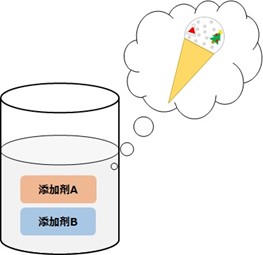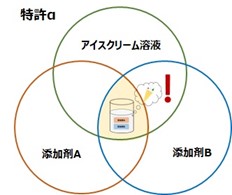Basics of how to proceed with the rights search of other companies
2019.12.01 | search column
table of contents
XNUMX. Introduction
Another company's rights search is an search to see if a certain product (implemented technology) infringes another person's patent.In addition, it is also called infringement prevention search, clearance search, FTO search (Freedom To Operate), etc., and each company has its own characteristics in how to proceed with the search.In this article, I will introduce the basic idea when proceeding with the rights search of other companies.
XNUMX. What is patent infringement?
First of all, let's take a quick look at what it means to infringe a patent.The patent right arises from the patent granted and registered after the patent application.The so-called "infringement of another person's patent!" Means that the patent registered in this setting has been infringed.Then, in what cases does patent infringement occur?When considering patent infringement (direct infringement), the idea of "the principle of united rights" is often used. (In foreign countries, it is also called All Element Rule.) This means that only the implementation technology (practice act) that satisfies all the constituent requirements of the claims satisfies the scope of the claims. The idea is that it will infringe the patent.
3. Basic procedure
3.1 Principle of unity of rights
In this section, we will explain patent infringement in line with the principle of united rights using specific examples.
Example XNUMX.
Implementation technology: Ice cream solution containing Additive A and Additive B
Patent α: (Independent item) Ice cream solution containing Additive A and Additive B
Patent β: (Independent item) Ice cream solution with additive A added
Patent γ: (Independent item) Solution to which Additive B is added
The patent α shown in Example 1 has three constituent requirements: “α-2 additive A is added”, “α-3 additive B is added”, and “α-1 ice cream solution”. There is.Comparing the satisfaction with the implemented technology, all of α-3 to α-XNUMX will be satisfied, which means that the patent α is infringed.
Similarly, the patent β has two constituent requirements: “β-1 additive A is added” and “β-2 ice cream solution”.What about this case? The implementation technology for both β-1 and β-2 satisfies these two constituent requirements.In this case as well, it means that the patent β is infringed.At this point, you may be wondering, "Where did Additive B go? (Where is it related?)".Additive B is not mentioned in patent β in the first place, so there is no need to consider it.This is a major difference between the pre-application search and invalid material search, which confirms whether or not the constituent requirements are disclosed, and the rights search of other companies.The other company's rights search is not to confirm whether the implemented technology is disclosed, but to confirm whether the constituent requirements in the claims are satisfied (satisfied) with the implemented technology.

What about the next patent γ?Patent γ has two constituent requirements: “γ-1 additive B is added” and “γ-2 solution”. You will soon understand that γ-1 is satisfied by the implementation technology and that additive A does not need to be considered.What is important here is the satisfaction contrast between the "γ-2 solution" and the "implementation technology ice cream solution". The term "solution" may have implications for aqueous solutions, organic solutions, solutions as detergents, and solutions as juice beverages.Therefore, the ice cream solution can be contained in the solution, the solution is considered to be a superordinate concept of the ice cream solution, and γ-2 is considered to be satisfied by the implementation technology.Therefore, it can be said that the implementation technology also infringes this patent γ.Strictly speaking, the patent γ-2 "solution" is a patent that assumes even an "ice cream solution", and its scope of rights (so-called "range") covers the ice cream solution. In some cases, inclusion is an issue.However, in patent search, it is basic to first consider the technical superordinate concept and subordinate concept, and consider the satisfaction / non-satisfaction.
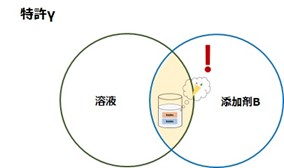
3.2 Materials to be searched
Next, let's check the target materials.In the previous chapter, "Patent rights are granted to those who have been granted a patent decision after filing a patent application and have been set and registered."Then, is it sufficient to search only for patents that have been registered as settings (hereinafter referred to as "registration gazettes")?In companies, etc., it is an important purpose to carry out the implementation technology safely.Therefore, it is not enough to worry only about infringing a patent, but the current situation is that "when a patent is granted, we are also concerned about the possibility of infringement."In other words, the published application (hereinafter referred to as the published gazette) before the setting registration is also promptly confirmed as infringing, and in some cases, the patent establishment is prevented by providing information and the license negotiation from the publication stage is carried out.Therefore, in the rights searchs of other companies that I carry out on a daily basis, not only registered publications but also public publications are included.In addition, so-called "death information" such as applications for which refusal has been confirmed and patent rights for which the patent right has been canceled due to non-payment of the pension is not included in the search.
4. Clarify "what you don't do"
When we contract the rights of other companies from our clients and design the search, we strive to understand the technologies that have been implemented, and we pay particular attention to the understanding of "non-implemented technologies" and "unconfirmed technologies."Non-implemented technology is a technology that is not included in the implemented technology, and is the so-called “do not do”.An undetermined technology is a technology for which it is uncertain whether or not it is included in the implemented technology and there is a range of consideration.If the implementation technology to be investigated is a "product", its specifications are fixed, the implementation technology and non-implementation technology are clear, and there will be almost no unconfirmed technology.However, if the implemented technology is "in the research stage or the examination stage", some of the implemented technologies may have been decided, but there are few that can be said to be non-implemented technologies, and there are many unconfirmed technologies. It tends to end up.With these points in mind, let's look at the following example.
Example XNUMX.
Implementation technology: Ice cream solution containing Additive A and Additive B
Non-implemented technology: Additive C (Additive C is not added)
Undetermined technology: Additive D (addition / non-addition of additive D is unconfirmed)
Patent δ: (Independent item) Ice cream solution containing Additive A and Additive C
Patent ε: (Independent item) Ice cream solution containing Additive A and Additive D
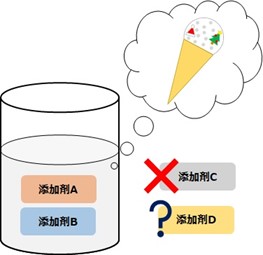
The patent δ shown in Example 1 has three constituent requirements: “δ-2 additive A is added”, “δ-3 additive C is added”, and “δ-1 ice cream solution”. There is.Of these, you will soon find that δ-3 and δ-2 are satisfied.What is important here is the judgment that "δ-2 additive C is added".This time, it is clear that "additive C (additive C is not added)" as a non-implemented technology, so the constituent requirements of this δ-XNUMX are not satisfied.Therefore, the implementation technology is non-infringement for patent δ, which includes at least one unsatisfied component.
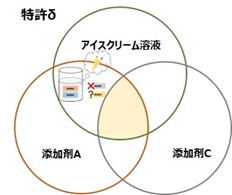
Next, the patent ε has three constituent requirements: "ε-1 additive A is added", "ε-2 additive D is added", and "ε-3 ice cream solution". I will. ε-1 and ε-3 are satisfied.What should be considered here is "adding ε-2 additive D".Since the addition / non-addition of Additive D is undecided, it is necessary to make the satisfaction contrast to the constituent requirements of ε-2 "undecidable".Therefore, there is a possibility of infringement because the patent ε does not have any constituent requirements that are clearly unsatisfied.In the actual search, it will be reported.
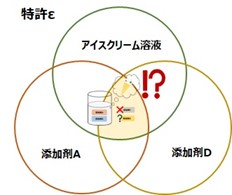
In this way, the existence of unconfirmed technology will increase the number of reported documents that "may infringe".On the contrary, the clearer the non-implemented technology and the more viewpoints there are, the more non-satisfaction requirements will be, and the more likely it is to be judged as non-infringement.For that reason,The rights search of other companies is not so much a search as extracting the reported documents, but rather a search that scrapes off the documents that do not need to be reported (non-infringing ones) using non-implemented technology.1). Therefore,How to prepare information that is not implemented technology is the key to improving the accuracy and efficiency of other companies' rights searches.It is also.
5. Conclusion
In this article, I introduced how to proceed with the rights searches of other companies that I carry out on a daily basis.However, as mentioned in Chapter 1, there are also cultures and policies for each client in how to proceed with the search.Therefore, in reality, we do not stick to the basic idea, but conduct interviews with clients and make search proposals while merging past experience and knowledge while following culture and policies.2)..Fortunately, I have had the opportunity to interact with many clients.I am looking forward to using them as food to further improve my responsiveness and make use of them in my next proposal.
Research Division Hashima
<Reference>
1) Kenichi Shizuno. Current status and issues in patent search, especially rights search. Science and technology of information. 2015, vol.65, no.7, p.284-289.
2) Wataru Hashima. Training and career paths of professional searchers. Science and technology of information. 2019, vol.69, no.1, p.10-15.
Inquiry
For inquiries regarding IP research and inquiries about our business, please contact us.
Please feel free to contact us using this form.
